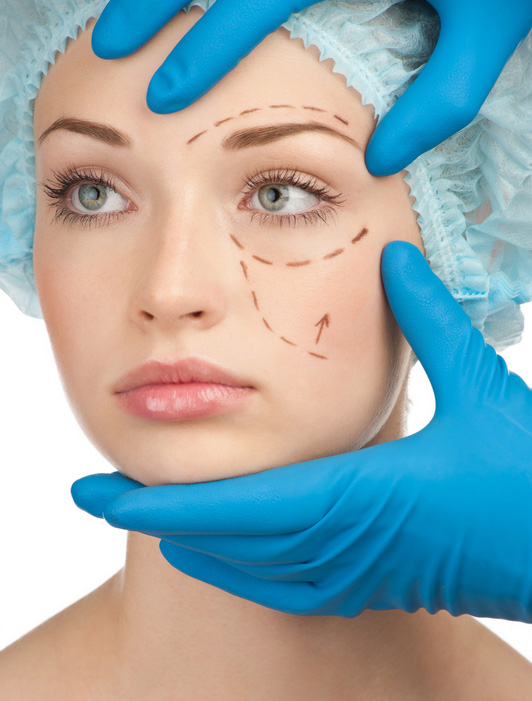As we grow older, the accumulated
effects of environmental elements damage
our skin, making us look older than
we actually are. Such skin damage can
be treated with a chemical peel, a non-invasive
procedure designed to promote cell growth
and produce smoother, clearer skin.
Chemical peels are also used to treat
melasma -a skin ailment characterized
by irregularly shaped patches of brown
skin commonly found on the face and
neck. Chemical peels can be performed
on the face, neck, chest, arms, hands,
and legs.
What is Chemical Peeling?
Chemical peeling involves an application
of a chemical solution to environmentally
damaged, unevenly pigmented, and finely
wrinkled facial areas. The procedure
is meant to diminish imperfections by
peeling away the skin’s top layers.
It has proven to be a very popular nonsurgical
cosmetic procedure. Chemical peels would
vary according to their specific ingredients.
Depth of peeling action may also depend
on factors such as sensitivity of the
skin, how long solutions remain on the
skin and the pressure with which they
are applied.
What is the procedure?
The surgeon will select the chemical
mix best suited for each individual
patient. A solution is applied—using
a sponge or brush—to the areas to be
treated. In most cases, the most superficial
peels are those using alpha hydroxy
acids (AHA), such as glycolic, lactic
or fruit acid. Various concentrations
of an AHA may be applied weekly or at
longer intervals to obtain the best
result. Compared to AHA’s, a trichloroacetic
acid (TCA) peel is stronger, and has
a greater depth of peel.
What is the recovery period?
After a chemical peel, most people experience
some facial swelling and reddening.
This is to be expected and, depending
over the type of peel used, will diminish
over a period of time.
Light peels: Alphahydroxy
acids (AHAs): Some flaking, redness
and dryness of skin will be felt. Over
a period of time, natural healing will
remove the outer layer of skin. Normal
activity can be resumed one day after
the peel procedure.
Medium
peels: Trichloroacetic acids
(TCA) In the case of TCA peels, the
swelling and is significantly higher
than that of light peels. Normal activity
can be resumed within 10 days of the
peel procedure
Deep peels:
Phenol acid After a Phenol peel, your
doctor may prescribe a mild pain medication
to relieve any discomfort. The skin
will be red at first but the color will
lighten over a few weeks to a few months
Sun block is strongly recommended,
especially with TCA treatment. Skin
pores may appear larger, and the skin
may not tan evenly following a chemical
peel.
Will I feel pain?
Most people feel a brief burning sensation
during the procedure. The pain will
vary depending on the level of sensitivity
of the skin, the type of peel used as
well as pain medications used. The BHA,
AHA and TCA peels cause discomfort only
during the application. The phenol peel
may give discomfort to some after the
procedure too.
Possible complications associated
with chemical peels: Possible complications
associated with chemical peels may include
but are not limited to the following:
• scarring
Chemical peels can cause scarring
which can usually be treated effectively.
• change in skin color
For some people with extremely sensitive
skin types, there is a risk of developing
a temporary or permanent skin color
change. Birth control pills, pregnancy
or having a family history of brownish
discoloration on the face are other
factors which may increase the probabilities
of developing abnormal pigmentation.
• cold sores and fever
blisters
Those who are
prone to cold sores, or herpes simplex
infections, may have a reactivation
of sores or blisters following a
chemical peel.





